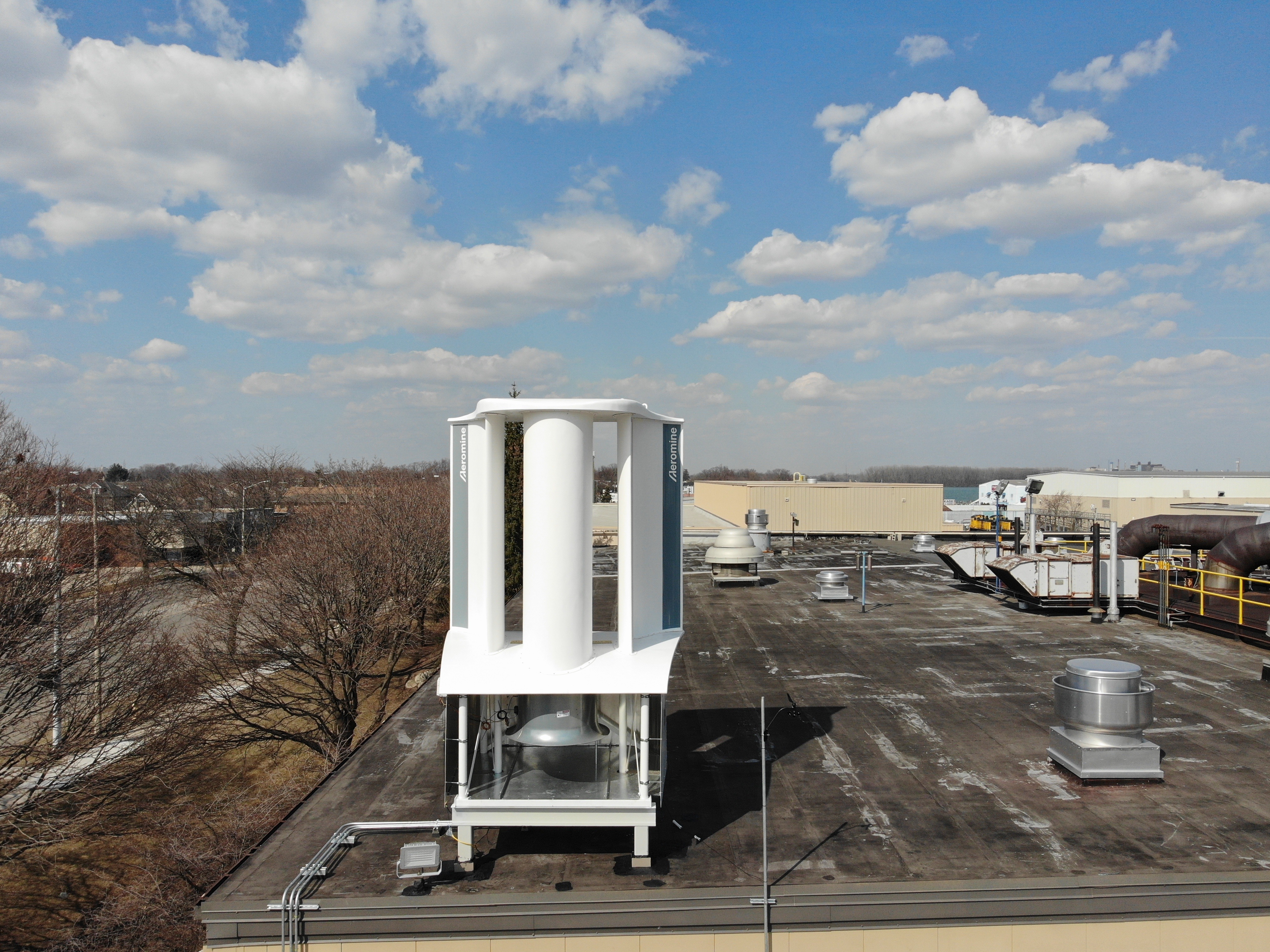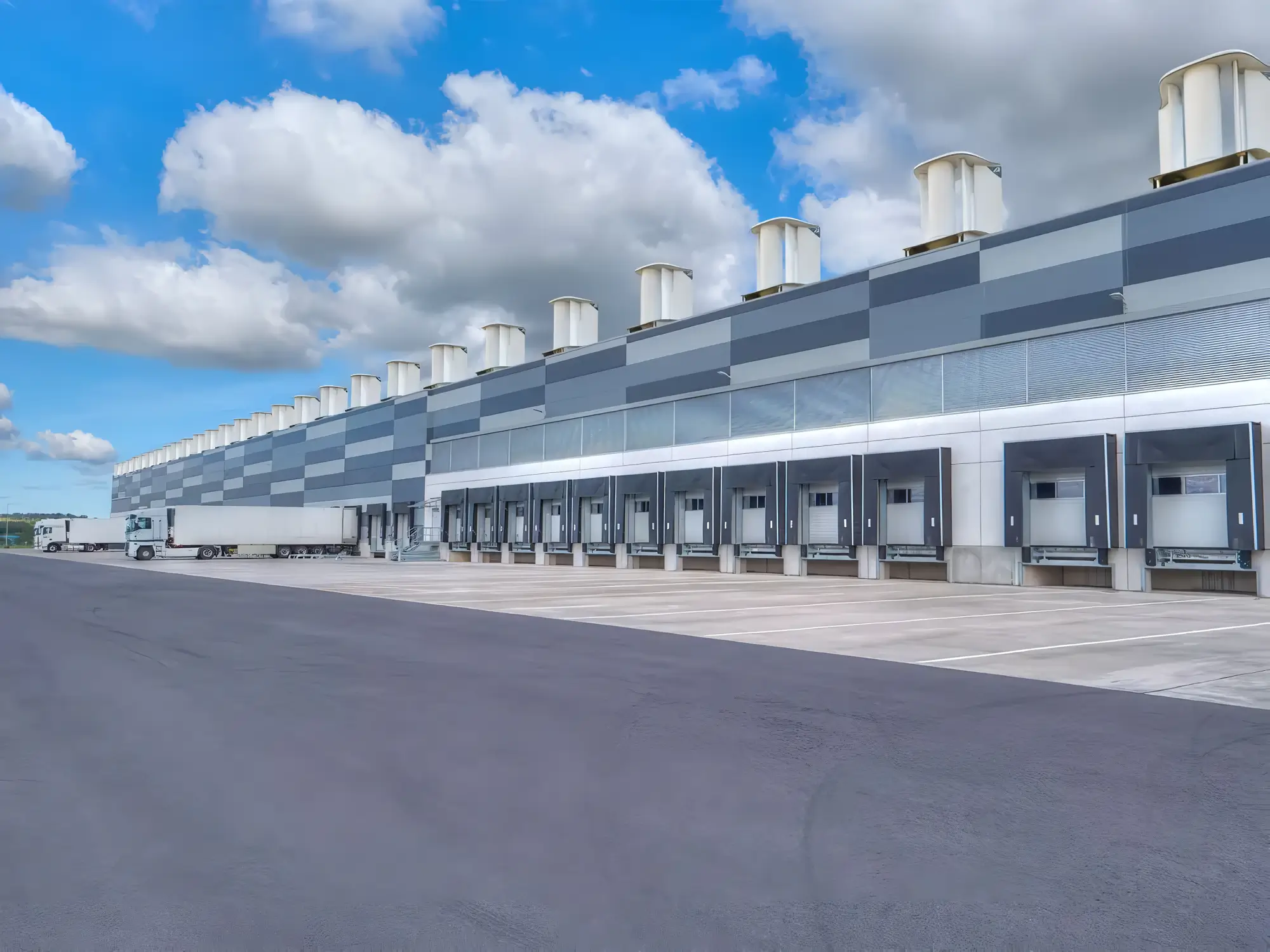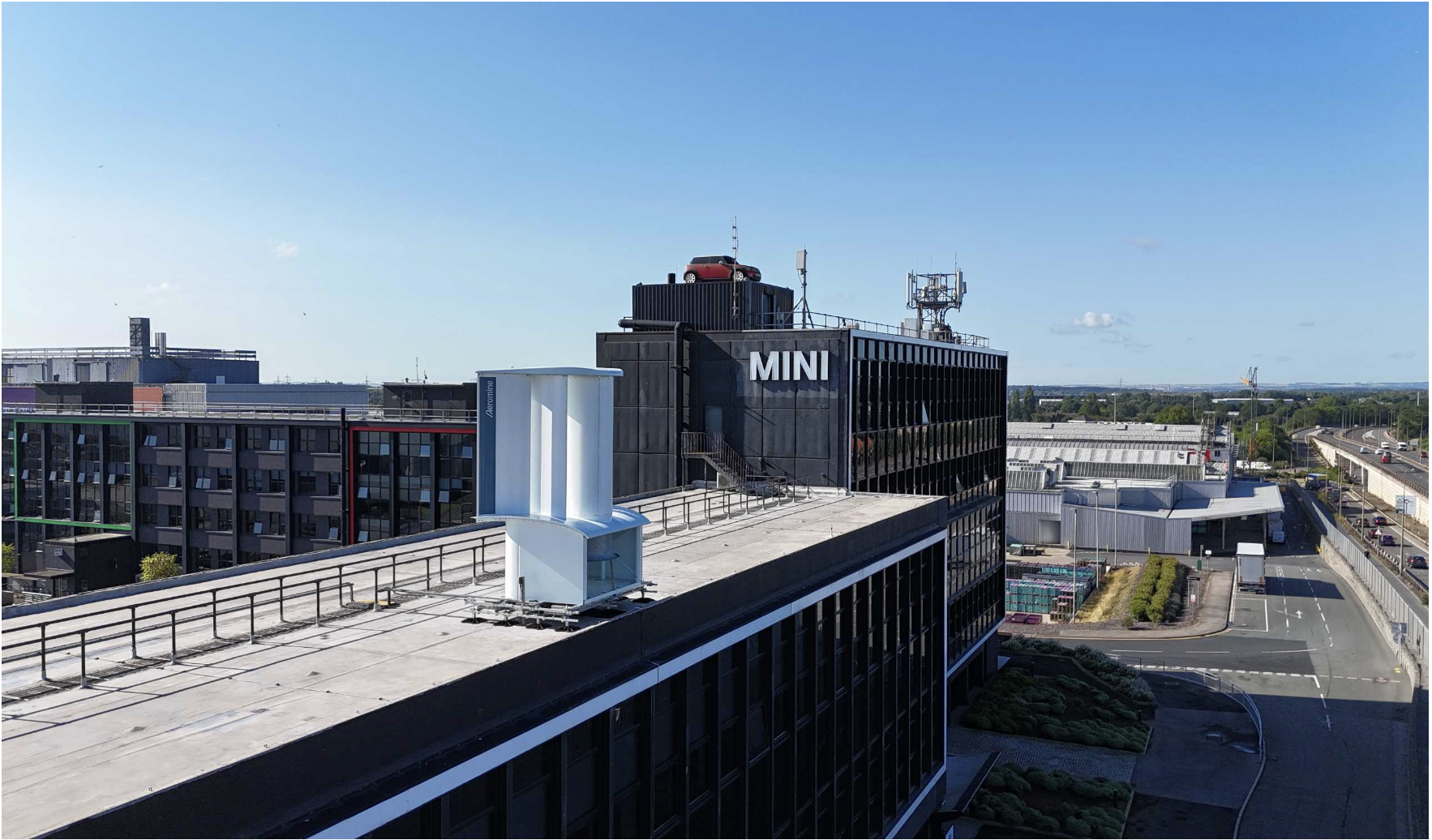January 29, 2023
By Nick Pipitone
The idea of rooftop wind turbines seems to make perfect sense. Urban areas can be plenty windy, and the higher you place the turbines atop a tall building, the more chance to harness the power of the wind. You would think. It’s true that there are fewer obstacles for wind atop tall commercial buildings, and the low-pressure air is stronger. But rooftop wind turbines are a rarity in commercial buildings, and there are a few practical reasons for this.
One of the reasons is because the wind turbulence around most rooftops makes energy production inefficient. As they pass by tall buildings, winds twist and spin, making them not nearly as effective for turbines as “laminar flow,” which travels smoothly and more regularly. Other challenges are noise and vibration. Huge, spinning turbines generate a lot of both, which can be a nuisance for the people occupying the buildings.
This doesn’t mean smaller-to-medium-sized wind turbines haven’t been installed atop commercial buildings. The data on how common it is is hard to come by, but a report from the National Renewable Energy Laboratory gathered several case studies, including an installation on a NASA Building in Houston and the Museum of Science in Boston. In the late 2000s, a California company called AeroVironment provided a rooftop wind solution known as the AVX1000, a 1-kilowatt turbine specifically designed for commercial buildings. The MassPort office building at the Logan Airport in Boston had 20 of these turbines.
The vertical-axis turbine product from AeroVironment was quieter than traditional, horizontal-axis types, but its efficiency was lower than most rooftop solar panel arrays. The turbine product wasn’t cheap, either, estimated to sell for between $30,000 to $40,000. A check of AeroVironment’s website shows the company likely exited the wind energy market, and it now focuses on unmanned aircraft and even tactical missile systems. Quite the switch. Other companies market turbines for commercial buildings, though they haven’t seen widespread adoption. NREL’s report lists nearly two dozen companies that offer rooftop wind solutions, though some have gone out of business and others have exited the gusty wind energy market.
There are new technologies that could change this rooftop wind calculation. A company called Aeromine Technologies has released a new bladeless wind energy solution that integrates with building electrical and existing solar energy systems. Aeromine’s wind energy system is installed on the edge of rooftops and, according to them, can generate up to 50 percent more power at the same cost as rooftop solar panel arrays, though it can be used in tandem with solar. BASF Corporation is one of the companies currently piloting the technology at its manufacturing plant in Wyandotte, Michigan.
Aerodynamically correct
Aeromine’s tech has its fair share of limitations, but it’s promising for a commercial real estate market hungry for renewable energy. And if it proves to work as advertised and becomes popular, the technology could make the previously unattainable goal of harnessing wind power atop commercial buildings closer to reality.
The technology is unique because it’s not actually a wind turbine. The units work like vacuum pressure and leverage aerodynamics like the airfoils on a race car, which captures and amplifies a building’s airflow. The fixed wings inside the box generate a low-pressure vacuum in the center, which sucks air through the wings. The systems consist of between 20 to 40 units installed on the edge of a roof facing the main wind pattern. The units are in a box-like form; while they take up a small roof footprint, they’re still bulky. Depending on the installation, the turbine is at the bottom of the central pole. The systems are cheap to build, not requiring fancy materials like carbon fiber, and they can be assembled and disassembled for transport for a simple installation process on-site.
The technology is designed to work with a building’s existing electrical system and combine with rooftop solar to, in some cases, generate up to 100 percent of a building’s on-site energy needs. “If you pair wind with solar, you can start to look at net-zero scenarios for commercial properties,” Aeromine’s CEO, David Asarnow, told me. There are obvious peak periods for wind, but Asarnow says power generation from the units is relatively good 24/7, generating energy at wind speeds as low as 5 mph.
Aeromine hasn’t revealed a standard capacity for the system, but in one presentation, the units were rated for 5 kilowatt-hours each. That’s close to the output of a standard 21-panel residential rooftop solar system. Multiple Aeromine units can run along the edge of a commercial roof about 15 feet apart. Aeromine’s presentation to the AFWERX Reimaging Energy challenge says the system can generate approximately 14.3 megawatt-hours annually. For perspective, consider that many residential rooftop solar systems generate about 9 megawatt-hours annually.
Wind plus solar
Aeromine’s wind energy system was invented and patented in 2016 by Dr. Carsten H. Westergaard, who has nearly three decades of experience in wind energy R&D with large international wind energy firms. The tech is a culmination of Westergaard’s life’s work, something he patented during his tenure teaching wind energy technology at Texas Tech University. The tech was validated through Sandia National Laboratories and Texas Tech University research.
Asarnow, the CEO, co-founded the company in 2020 after meeting the wind energy professor, saying he immediately saw the opportunity in the invention. BASF is their first commercial project, but they have others in the planning stages. The technology will likely work best with large properties with flat rooftops. Buildings with fewer obstructions blocking wind flow are prime candidates for the tech. The core use for the system will likely be more industrial, warehouse, and “big box” commercial buildings. So, along the lines of a large Amazon or Walmart distribution center would be ideal. However, the tech could still work given the right conditions for multifamily, offices, data centers, and many other types of commercial properties.
The potential for Aeromine’s product is clear. Solar and wind work well when combined, as solar generates power during the sunniest periods, while wind can work 24 hours but depends on conditions. The relatively small rooftop footprint of the system makes it possible to cover the rest with solar panels and possibly add on-site battery storage, too. One downside of the technology is that the wind direction needs to be constant because the units don’t angle themselves to catch the wind. The units may also cast long shadows, blocking the sun from rooftop solar panels unless the building is oriented the right way.
Aeromine’s wind energy tech could be a significant leap forward for rooftop wind, and BASF’s pilot of the technology shows there’s commercial interest. Most commercial property owners are accustomed to rooftop solar at this point, which has become increasingly cheaper in recent years. Getting property owners to switch to a strange, novel new system may take time, but if rooftop wind can push buildings closer to net zero, it may be worth it.
In cases where rooftop wind tech is appropriate, it can be another tool for building owners to generate renewable power, save on energy costs, and lower carbon emissions. Rooftop wind has never penetrated the commercial real estate market in the past for a plethora of reasons. Smaller turbines don’t generate enough power to be cost-effective, spinning blades create noise and vibration nuisances, and they’re too high-maintenance compared to rooftop solar. But this new breakthrough could mean rooftop wind energy is a more viable tech, and wind and solar power can combine into an attractive energy efficiency duo for the commercial real estate industry.
https://www.nrel.gov/docs/fy16osti/65622.pdf
https://propmodo.com/commercial-developer-teams-up-with-solar-power-company-to-light-up-millions-of-u-s-industrial-properties/
https://propmodo.com/the-rooftop-solar-debate-has-become-a-class-war/
Source: https://propmodo.com/can-tech-help-commercial-properties-harness-the-power-of-the-wind/


